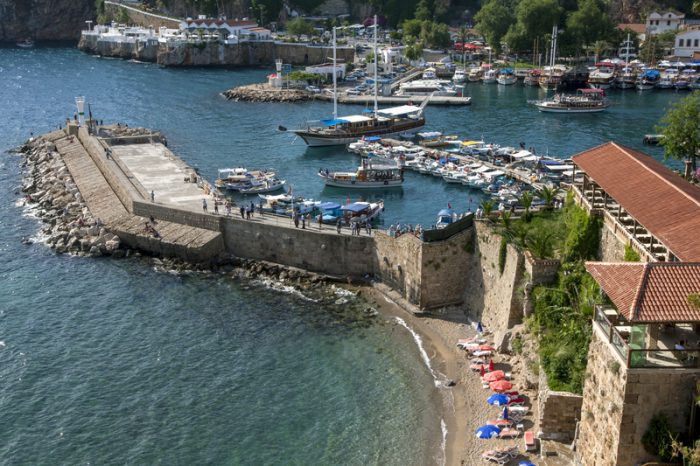Concrete. The word alone sounds strong and firm.
But in reality, a lot of concrete ends up looking like this pretty quickly.
Even rainwater both eats away at the concrete and rusts the steel reinforcement bars inside. (Getty Embed)
And this is especially true when it's in contact with seawater. The repeated pounding of waves and its high salinity (that's the salts dissolved in the water!) eats away quickly at even the best modern concrete we can build. This means that these concrete structures can become dangerously unstable and in need of repair.
And then there is 2,000 year-old Roman concrete. Which is stronger now than it was the day it was poured.
How is that possible?
An ancient miracle of science
Researchers wondered the same thing. After all, the ancient Romans used concrete to build harbours, bridges, causeways (long road or path across water), and breakwaters (a structure designed to provide shelter by "breaking" or softening the impact of incoming waves). Many of them are still standing and the concrete has actually strengthened over time.
An ancient Roman villa in Anzio, Italy. (Getty Embed)
Researchers took samples from these structures and discovered that their longevity isn't thanks to some blessing from the gods (though that couldn't have hurt). The reason why is because of an ancient recipe for concrete unique to the Romans.
The power of volcanoes and... lime?
Modern concrete is based on a mixture called portland cement. It contains silica sand, limestone, clay, chalk and other ingredients that are mixed at a super hot temperature. It's definitely strong, but it doesn't like foreign substances, especially ones carried by water. These invade and break down the composition of the concrete over time.
Roman concrete is very different. It is a mixture of three main ingredients. First is volcanic ash (there is also some volcanic rock, too). Then there is lime. No, not the fruit, but a material also known as calcium oxide. And finally, there is seawater (yep, the very thing that eats away at modern concrete!)
Incredibly, this combination leads to a chemical reaction as more seawater washes up against it. A rare substance called aluminous tobermorite is created—this super-hard material makes the concrete even tougher. In other words, water has the exact opposite effect on this concrete. Amazing!
Watch this video for more.
Lost to time
So, if that's all there is to it, let's all make some Roman concrete, right? Sadly, it's not that easy. For now, the secret recipe of concrete has been lost to time. Hopefully, scientists can reformulate this mixture so that our future structures can have some of that Roman magic.
Or if that fails, pray to Jupiter and Neptune before they build their next bridge. Couldn't hurt!
 The ancient Roman harbour of Kaleici in Antalya, Turkey still stands today thanks to the miracle of Roman concrete. (© Thomas Wyness | ID 73892471 Dreamstime)
The ancient Roman harbour of Kaleici in Antalya, Turkey still stands today thanks to the miracle of Roman concrete. (© Thomas Wyness | ID 73892471 Dreamstime)









